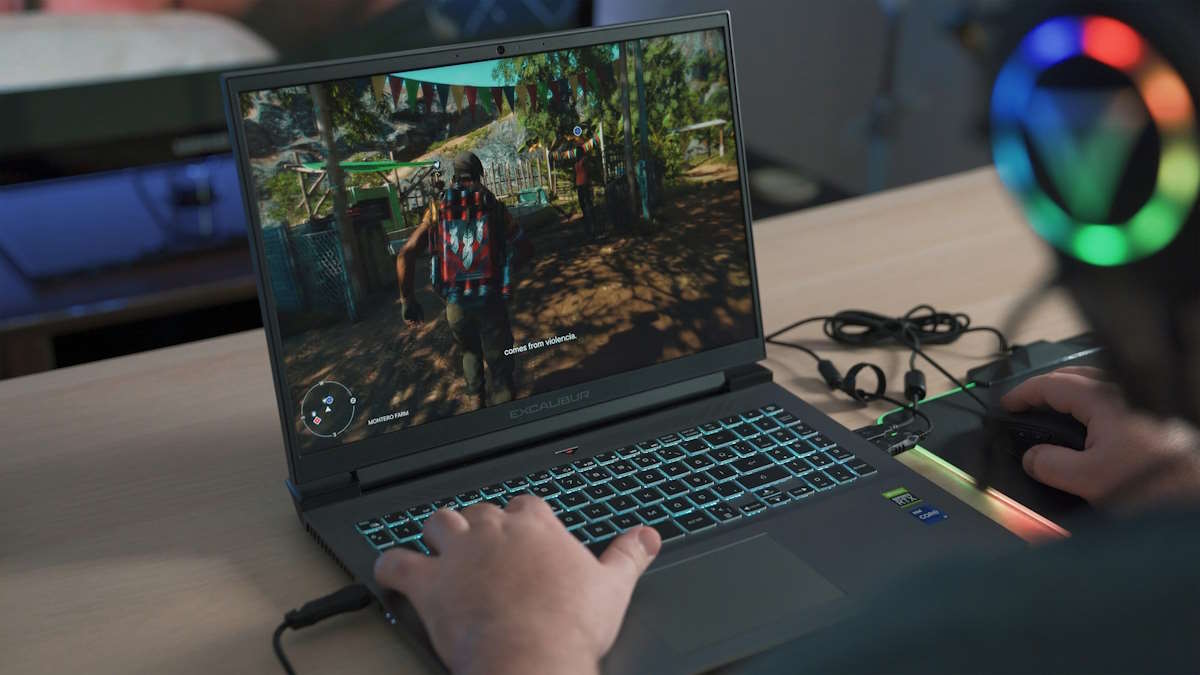High-frame rate (HFR) technology is rapidly transforming the way we interact with digital media, particularly in gaming, streaming, and productivity.
By offering smoother animations and sharper visuals, HFR has become vital for enhancing user experience across various devices. Recent advancements have pushed frame rates beyond 60 frames per second (fps) to as high as 240 fps, particularly for high-end gaming and esports, where reaction time and smooth visuals are critical for success.

Studies have shown that higher frame rates not only improve gameplay but also reduce issues like screen tearing and ghosting, creating a more immersive experience.
The adoption of HFR is also growing in video streaming, with platforms like YouTube and Twitch supporting content at 60 fps, which provides smoother playback for action-packed videos. As of 2024, even monitors capable of 1000 Hz refresh rates have been demonstrated, showcasing the potential for ultra-smooth visuals in both gaming and productivity
As this technology evolves, HFR is set to become a standard feature across devices, promising improved performance for gaming, streaming, and even office tasks.
Optimizing High-Frame Rate Technology for Multiple Devices
As high-frame rate (HFR) technology continues to advance, optimizing it for a wide range of devices and uses has become key to ensure consistent performance and visual quality across platforms.
From gaming consoles and smartphones to streaming devices and computers as well as for high frame rate in video production, HFR delivers smoother visuals, improved motion clarity, and better overall user experiences.
Getting the best out of HFR requires device-specific adjustments and strategic use of compatible hardware and software. This section explores the key areas in which users and developers can optimize HFR technology for different devices to ensure maximum performance.
Choosing the Right Display for High-Frame Rate
When it comes to HFR, having the right display is key for achieving optimal visual performance.
High-refresh-rate monitors and TVs are designed to take full advantage of higher frame rates, reducing issues such as screen tearing and motion blur. Choosing a display with a refresh rate that matches or exceeds the frame rate output of your content or game is critical.
- For Gaming: If you are a gamer, choosing a monitor with at least 120 Hz or 144 Hz is highly recommended. For competitive gaming, a 240 Hz monitor or even higher is ideal to experience the full benefits of HFR
- For Streaming and Videos: While most TVs and monitors support 60 Hz, more advanced models now support up to 120 Hz or higher. Streaming content at 60 fps or more is becoming the standard on platforms like YouTube and Twitch, especially for sports or fast-action videos
- Mobile Devices: Many high-end smartphones now come with screens that support 90 Hz or 120 Hz refresh rates. Opting for these models ensures smoother scrolling and better gaming performance, making a significant difference in how content is perceived

Leveraging Adaptive Sync Technologies
To fully optimize HFR across devices, leveraging adaptive sync technologies such as NVIDIA’s G-Sync or AMD’s FreeSync can prevent issues like screen tearing and stuttering. These technologies synchronize the refresh rate of the display with the frame rate of the content, creating a smoother visual experience.
- G-Sync vs. FreeSync: G-Sync, developed by NVIDIA, is supported by a range of gaming monitors, particularly for high-end gaming setups. FreeSync, an open standard developed by AMD, is also widely available and tends to be more cost-effective
- For Multi-Platform Gamers: If you use multiple platforms (PC and console, for instance), choosing a monitor or TV that supports both G-Sync and FreeSync ensures better compatibility and smoother performance across devices. For example, Xbox Series X supports FreeSync, which can pair well with compatible monitors
- VRR for TVs: Variable Refresh Rate (VRR) is becoming more common in high-end TVs, especially for streaming and gaming. VRR allows the TV to adjust its refresh rate dynamically, which is especially useful for console gaming at high frame rates
Optimizing Graphics Settings for High-Frame Rate Performance
Achieving high-frame rate performance is not solely dependent on your display; it also requires fine-tuning graphics settings across devices. By adjusting these settings, you can maximize performance without sacrificing visual quality.
- Lower Resolution for Higher Frame Rate: Reducing the resolution can significantly improve frame rates, particularly on lower-end systems. In many cases, it is better to have smoother motion at 60 FPS or higher at a lower resolution (such as 1080p) than to experience choppy performance at 4K
- Disable V-Sync: Vertical Sync (V-Sync) locks the frame rate to the display’s refresh rate but can introduce input lag. Disabling V-Sync in favor of G-Sync or FreeSync is often recommended to maintain smooth motion without lag
- Optimize Game Settings: Many games provide options to reduce graphical intensity, such as disabling anti-aliasing or lowering shadow quality, to boost frame rates. These tweaks can help optimize performance, particularly in high-action scenes
Network Considerations for Streaming High-Frame Rate Content
When streaming content, ensuring your network can handle high-frame rate video is integral to maintaining visual quality without buffering or lag. Streaming platforms, such as Netflix, YouTube, and Twitch, now offer HFR content that requires a stable and fast internet connection.
- Recommended Internet Speeds: For 60 fps 4K streaming, a minimum internet speed of 25 Mbps is recommended. For 1080p at 60 fps, at least 15 Mbps is needed. Ensure your connection can consistently meet these speeds to avoid downgrades in quality
- Wired Connection Over Wi-Fi: For a more stable connection, consider using a wired Ethernet connection, especially when streaming high-frame rate content to devices like gaming consoles or smart TVs
- Streaming Devices: Devices such as Chromecast Ultra and Apple TV 4K are designed to handle HFR content, but make sure your internet connection and home network can keep up with the data demands of HFR streaming
Hardware Upgrades for Enhanced High-Frame Rate Performance
If your current setup struggles to maintain a high frame rate, upgrading your hardware is often the most effective way to enhance performance. This is especially true for gaming PCs, where components like graphics cards, processors, and storage can directly influence frame rates.
- Graphics Cards: Upgrading to a GPU that supports higher frame rates and refresh rates is critical for gaming at 144 FPS or higher. NVIDIA’s RTX series and AMD’s RX series offer robust performance for high-frame-rate gaming
- CPU: A faster processor can help eliminate bottlenecks that prevent your system from achieving high frame rates. Consider upgrading to a multi-core processor with a high clock speed to improve overall performance
- Storage: Upgrading to an SSD (solid-state drive) can significantly reduce loading times, which can indirectly improve frame rate consistency, particularly in games with large, open-world environments.

Endnote
High-frame rate technology is not only revolutionizing gaming and streaming, but it is also making its way into professional fields like video editing and virtual reality design.
As HFR adoption continues to grow, we can expect even greater integration into these industries, leading to faster workflow processes and more accurate visual renderings.
Looking ahead, there is also potential for HFR technology to play a critical role in medical imaging and training simulations, where precision and fluidity are key for success. This highlights how HFR’s impact is extending beyond entertainment and gaming, paving the way for broader technological advancements.